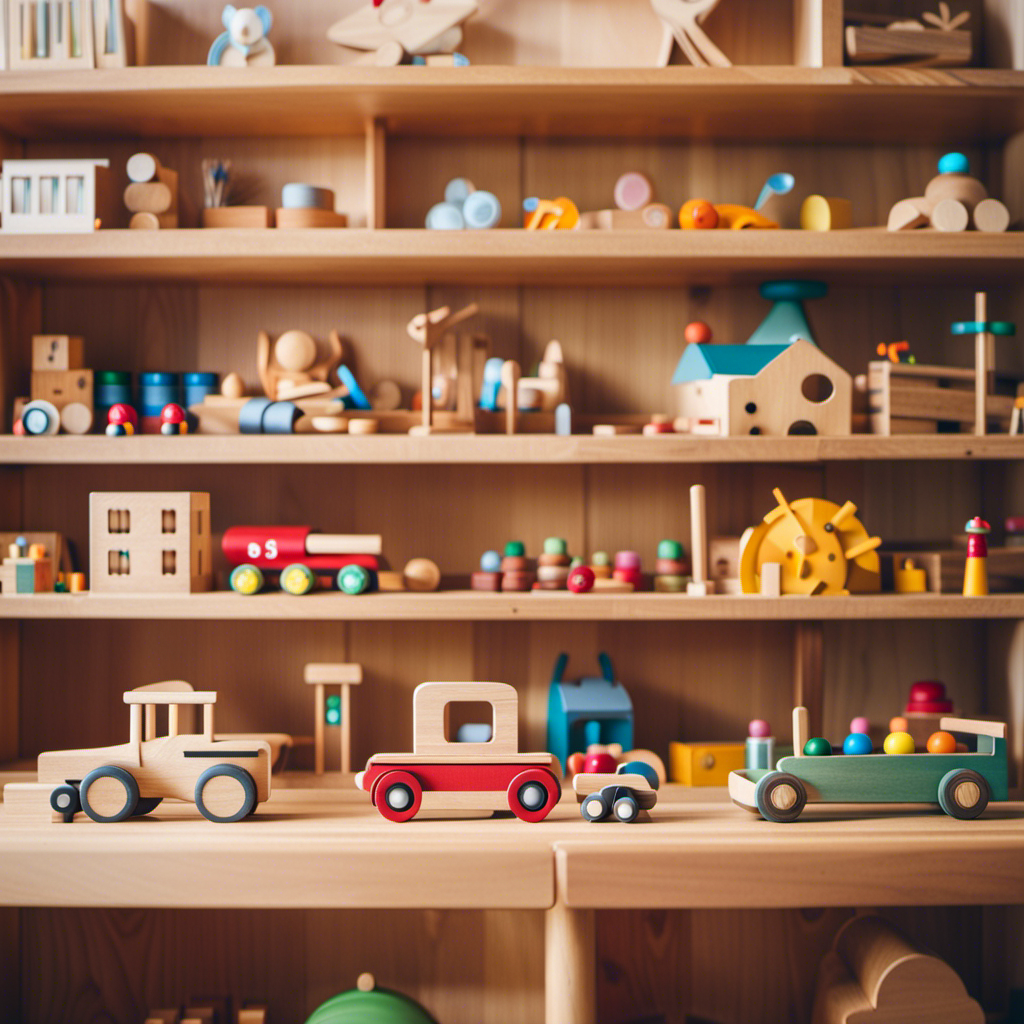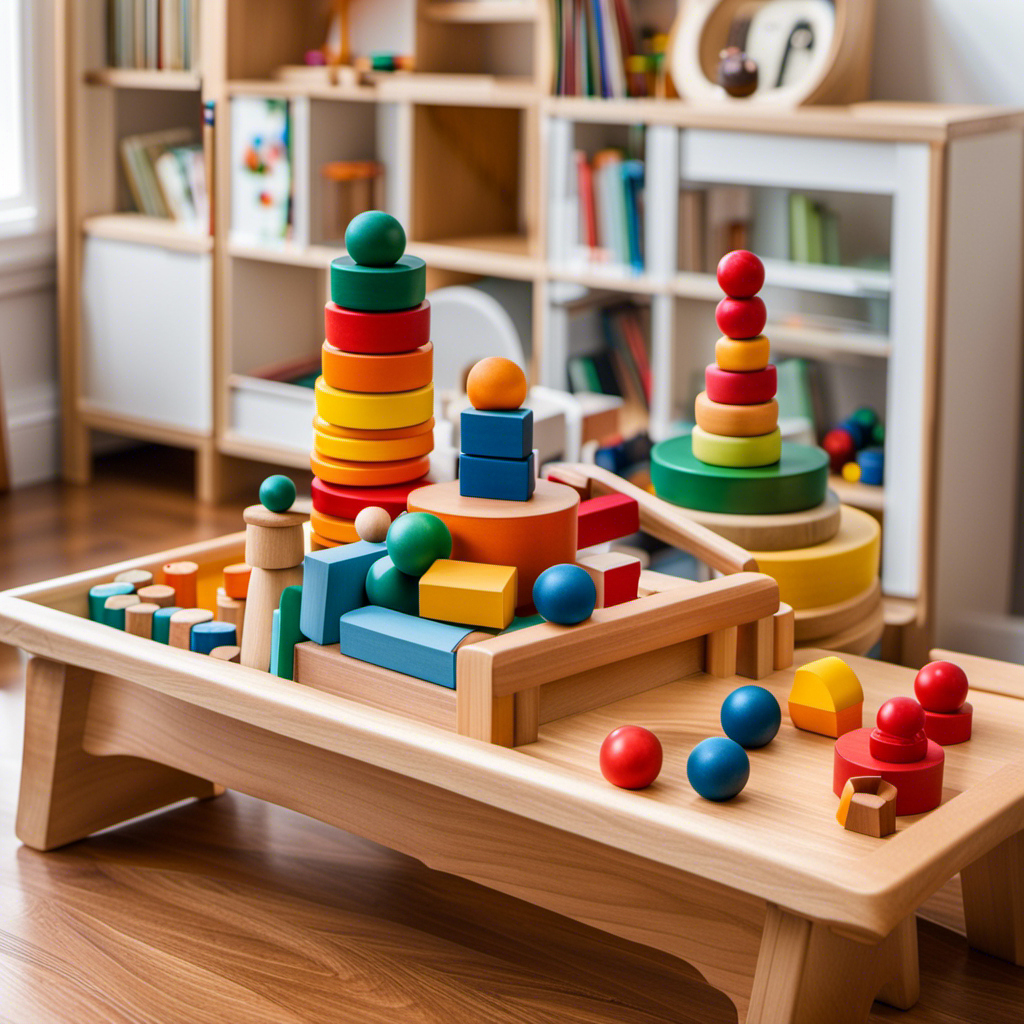Do your educational toys need a little extra attention and care? We’ve got you covered!
In this article, we’ll share with you 13 essential tips for maintaining your beloved educational toys.
From inspecting and storing them properly to using gentle cleaning methods, we’ll guide you on how to keep your toys in tip-top shape.
So, grab your toy toolbox and get ready to learn how to give your educational toys the care they deserve!

Key Takeaways
- Regularly inspect and store toys in a clean and dry environment to prevent damage and wear and tear.
- Use natural and eco-friendly cleaning solutions to clean educational toys and avoid harsh chemicals.
- Act promptly to remove stains using baking soda paste, vinegar solution, and other gentle cleaning methods.
- Repair damaged toys using proper techniques and DIY methods to ensure continued functionality and longevity.
Inspect Toys Regularly
To ensure the longevity and safety of our educational toys, it’s important that we regularly inspect them using a magnifying glass or flashlight. By inspecting our toys, we can identify any potential damage or wear and tear that may compromise their functionality or pose a safety risk.
It’s advisable to inspect the toys before and after each use, paying close attention to small parts, loose connections, or any signs of damage.
Additionally, proper storage of the toys is essential to prevent damage and maintain their quality. We recommend storing them in a clean and dry environment, away from direct sunlight and extreme temperatures.
Lastly, it’s crucial to avoid using harsh chemicals when cleaning the toys, as they may damage the materials. Instead, opt for gentle, non-toxic cleaning solutions to keep them in optimal condition.
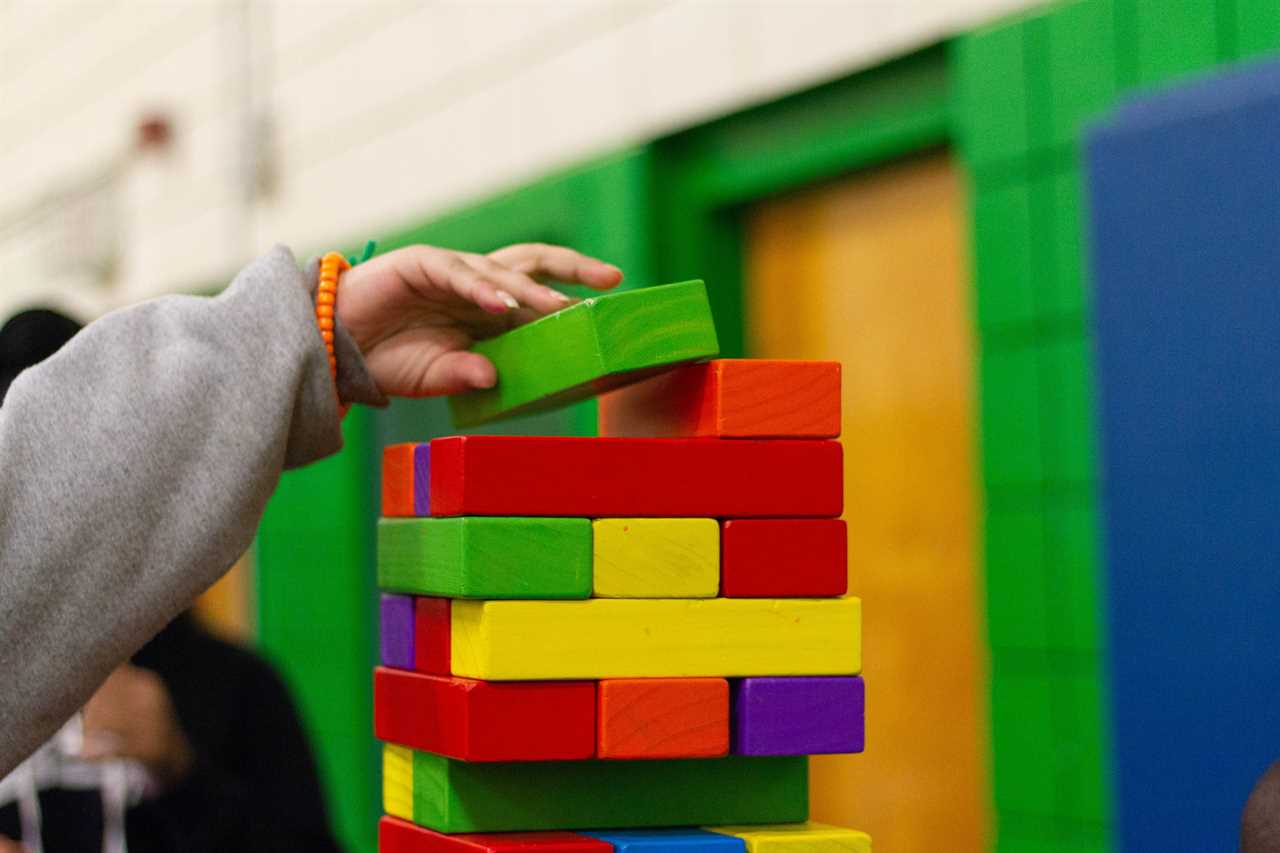
Store Toys Properly
For proper maintenance of our educational toys, we need to pay attention to how we store them. Proper toy storage is essential to keep our toys in good condition and extend their lifespan. Here are some tips for organizing your toy collection:
| Tip | Description | Benefits |
|---|---|---|
| Categorize toys | Sort toys into categories such as building blocks, puzzles, and art supplies. | Makes it easier to find specific toys and promotes tidiness. |
| Use clear containers | Store toys in transparent containers to easily see what’s inside. | Saves time searching for toys and keeps them dust-free. |
| Label containers | Label each container with the type of toy it contains. | Streamlines cleanup and encourages children to return toys to the correct place. |
| Consider shelving units | Invest in shelves or storage units to keep toys off the floor. | Maximizes space and provides easy access to toys. |
| Rotate toys | Alternate toys every few weeks to maintain interest and prevent clutter. | Keeps playtime fresh and reduces the number of toys out at once. |
Clean Toys Regularly
Cleaning our educational toys regularly is essential for their proper maintenance and longevity. Here are three important tips for keeping your toys clean:
-
Cleaning frequency: Make it a habit to clean your educational toys at least once a week. This will help prevent the buildup of dirt, dust, and germs, ensuring a safe and hygienic play environment for your children.
-
Eco-friendly cleaning options: Opt for natural and eco-friendly cleaning solutions when cleaning your toys. Avoid harsh chemicals that may be harmful to your children and the environment. Instead, use gentle soap and water or vinegar and water solutions to disinfect and clean the toys effectively.
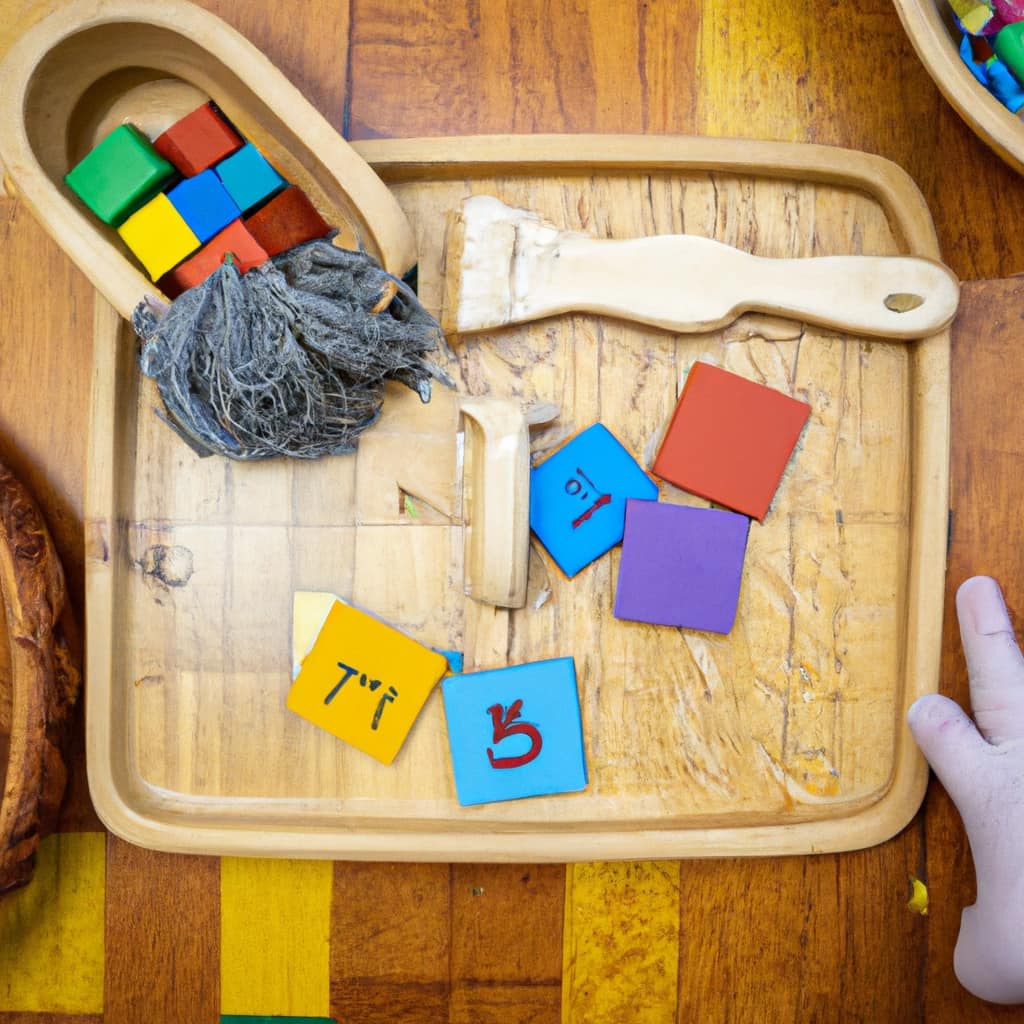
-
Thorough drying: After cleaning the toys, make sure to dry them thoroughly before storing. Excess moisture can lead to mold and bacteria growth. Allow the toys to air dry completely or use a soft cloth to wipe them dry.
Use Gentle Cleaning Methods
We ensure gentle cleaning methods are used to maintain the quality and longevity of our educational toys. Using gentle cleaning products and eco-friendly cleaning methods not only helps to preserve the toys but also ensures the safety of children who play with them. Here are some tips on how to clean our educational toys effectively:
| Cleaning Method | Steps | Additional Tips |
|---|---|---|
| Soap and Water | – Mix a small amount of gentle soap with warm water. – Dip a clean cloth or sponge into the soapy water and gently wipe the toy. – Rinse the toy with clean water and dry thoroughly. |
– Avoid soaking electronic toys or toys with batteries. – Check manufacturer instructions for any specific cleaning recommendations. |
| Vinegar Solution | – Mix equal parts of water and white vinegar. – Dip a cloth or sponge into the solution and wipe the toy. – Rinse the toy with clean water and dry thoroughly. |
– Vinegar helps to remove dirt and disinfect the toys naturally. – Test the solution on a small, inconspicuous area of the toy first to ensure it doesn’t cause any damage. |
| Baking Soda Paste | – Mix baking soda with water to form a paste. – Apply the paste to a cloth or sponge and gently scrub the toy. – Rinse the toy with clean water and dry thoroughly. |
– Baking soda is effective in removing stains and odors. – Use a soft toothbrush for hard-to-reach areas. |
Avoid Harsh Chemicals
To ensure the safety and longevity of our educational toys, it’s important to steer clear of harsh chemicals. Instead, opt for natural cleaning alternatives that are eco-friendly and gentle on the toys.
Here are three effective methods for maintaining your toys without the use of harsh chemicals:
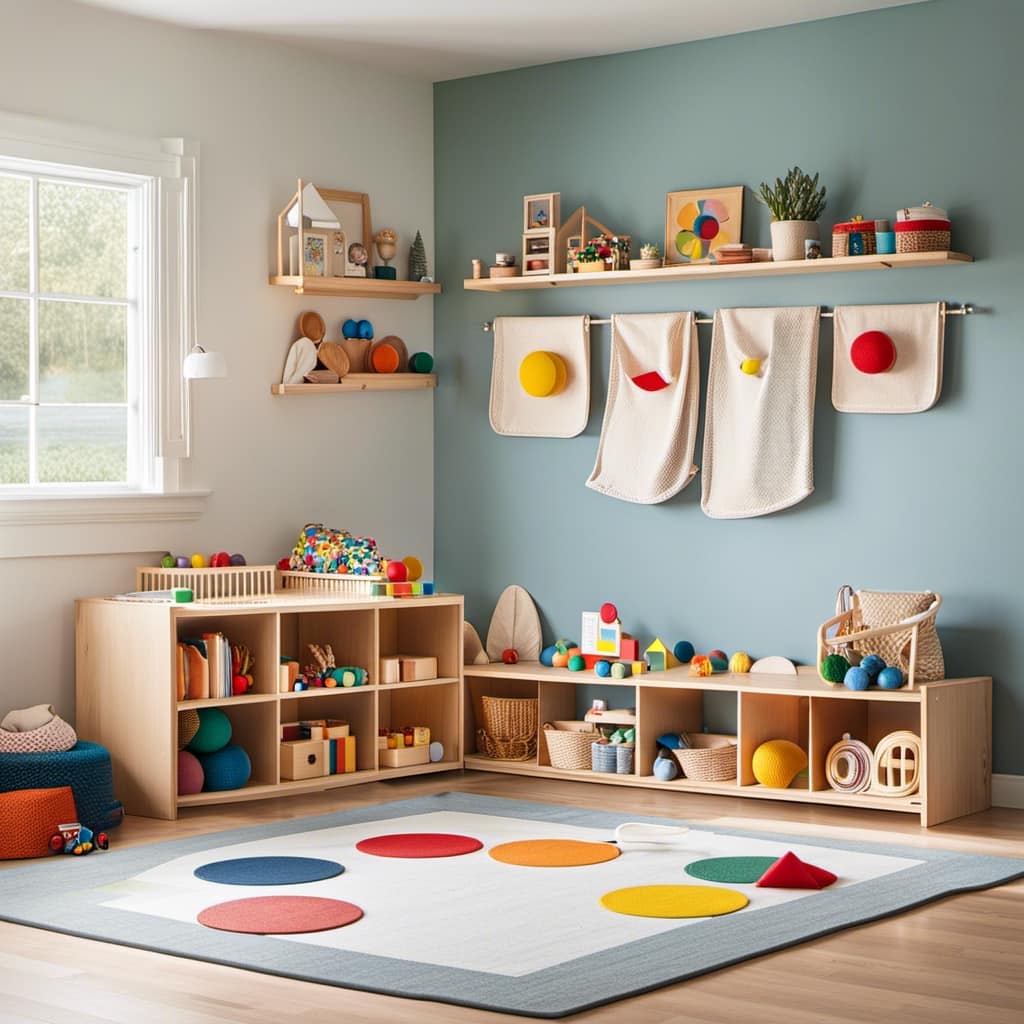
-
Vinegar and Water Solution: Mix equal parts vinegar and water in a spray bottle. This solution is great for wiping down plastic toys and removing dirt and grime.
-
Baking Soda Paste: Create a paste using baking soda and water. Apply the paste to a cloth and gently scrub wooden toys to remove stains and odors.
-
Lemon Juice and Olive Oil: Combine lemon juice and olive oil to make a natural polish for wooden toys. This mixture will leave the toys looking clean and shiny.
Remove Stains Promptly
When it comes to maintaining educational toys, one important aspect is removing stains promptly. In order to keep the toys in good condition and prevent long-term damage, it’s crucial to know effective stain removal techniques.
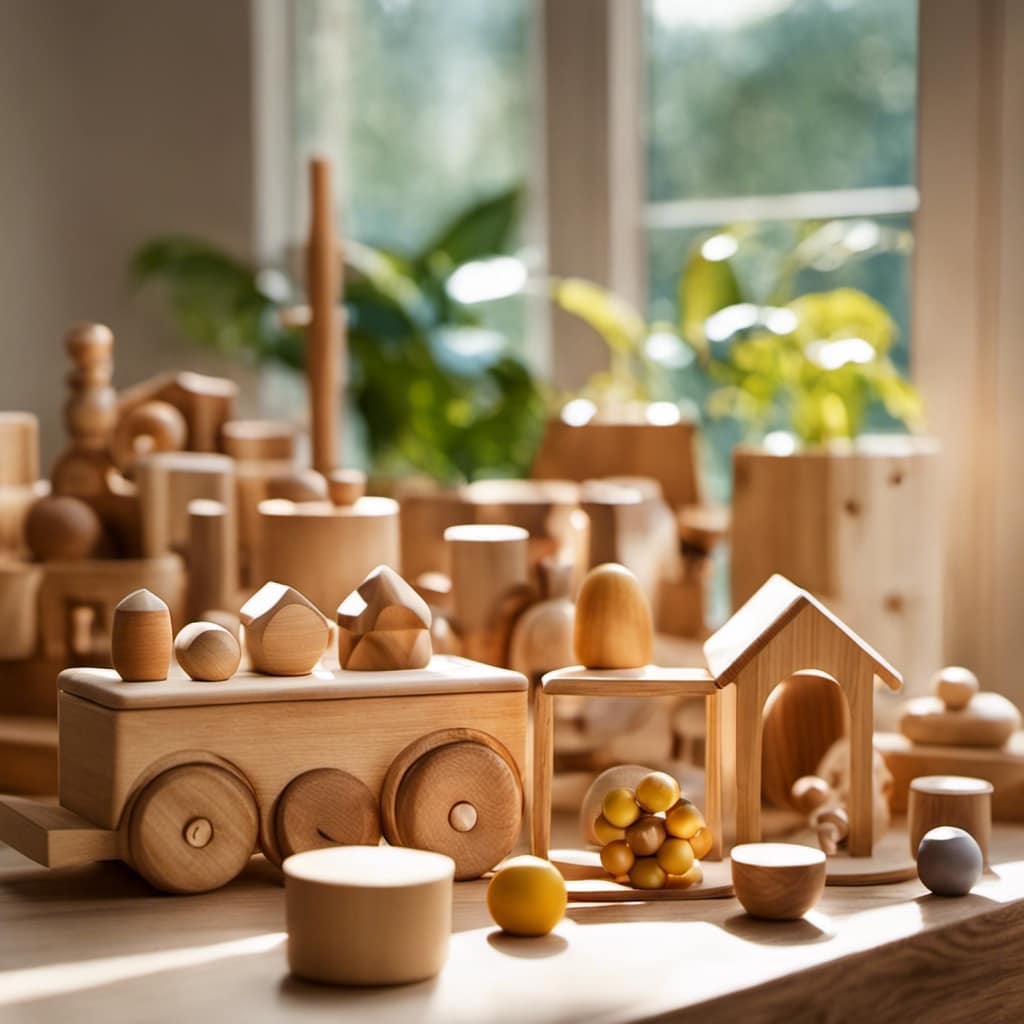
Stain Removal Techniques Explained
Regularly removing stains from educational toys is essential for their maintenance. Here are some stain removal techniques that will help you keep your toys looking clean and new:
-
Stain Removal Hacks: Try using baking soda and water to create a paste for removing tough stains. Apply the paste to the affected area, let it sit for a few minutes, and then gently scrub with a soft cloth. For oil-based stains, sprinkle cornstarch on the area and let it absorb the oil before wiping it away.
-
Natural Cleaning Solutions: Instead of using harsh chemicals, opt for natural cleaning solutions. Mix equal parts of white vinegar and water to create a mild cleaning solution. Dip a cloth into the mixture and gently scrub the stained area. You can also use lemon juice diluted with water for a fresh and effective cleaning solution.
-
Act Promptly: The key to successful stain removal is acting promptly. The longer a stain sits on a toy, the harder it becomes to remove. As soon as you notice a stain, take immediate action to prevent it from setting or causing long-term damage.
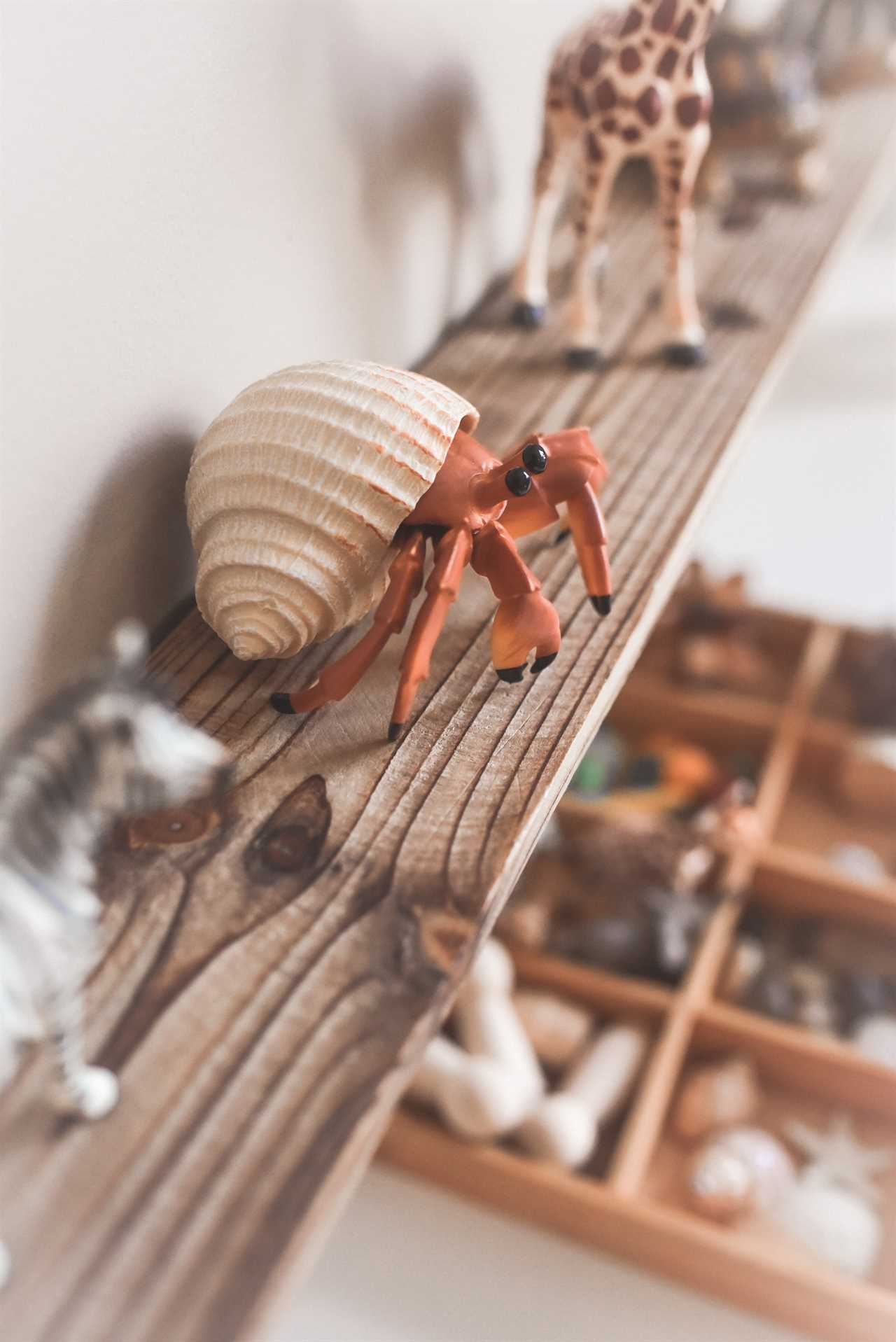
Preventing Long-Term Damage
To effectively prevent long-term damage to educational toys, we must make sure to promptly remove any stains that may occur. Stains not only make the toys look dirty and unappealing, but they can also lead to deterioration and compromise the quality of the toys over time. Here are some practical tips to help you remove stains from your educational toys:
| Stain Type | Cleaning Method | Tips and Tricks |
|---|---|---|
| Crayon | Warm soapy water | Gently scrub the affected area with a soft cloth. |
| Marker | Rubbing alcohol | Dab the stain with a cotton ball soaked in alcohol. |
| Food stains | Dish soap and water | Rinse the toy thoroughly after cleaning. |
| Ink | Hairspray or vinegar | Blot the stain with a clean cloth until it fades. |
| Play-Doh | Let it dry and scrape | Use a plastic scraper to remove dried Play-Doh. |
Repair Any Damages
Now that we’ve talked about removing stains promptly, it’s important to address the next step in maintaining educational toys: repairing any damages.
By taking the time to fix any broken parts or tears, we can extend the lifespan of the toys and prevent further deterioration.
In this discussion, we’ll explore some practical DIY repair techniques that can help us keep our educational toys in great condition for years to come.
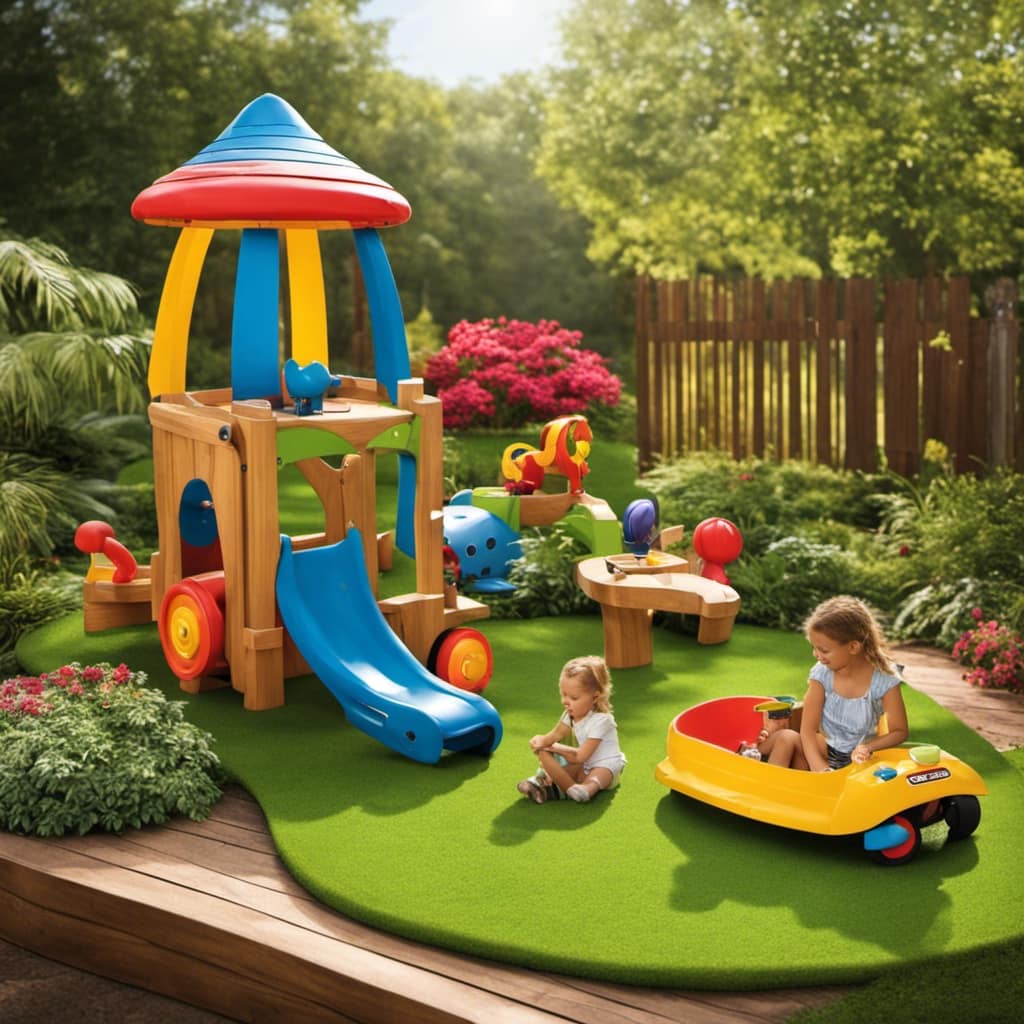
Extending Toy Lifespan
In order to extend the lifespan of educational toys, we should make sure to promptly repair any damages that occur. Repairing damaged toys not only prolongs their usability but also saves money by avoiding the need to buy replacements. Here are some essential steps to follow when repairing educational toys:
-
Assess the damage: Carefully examine the toy to identify any broken parts or loose components that need repair.
-
Gather necessary tools: Make sure to have the appropriate tools on hand, such as glue, screws, or replacement parts, to fix the toy effectively.
-
Follow proper repair techniques: Refer to the toy’s instruction manual or online tutorials for guidance on how to repair specific damages. Take your time and follow the recommended steps to ensure a successful repair.
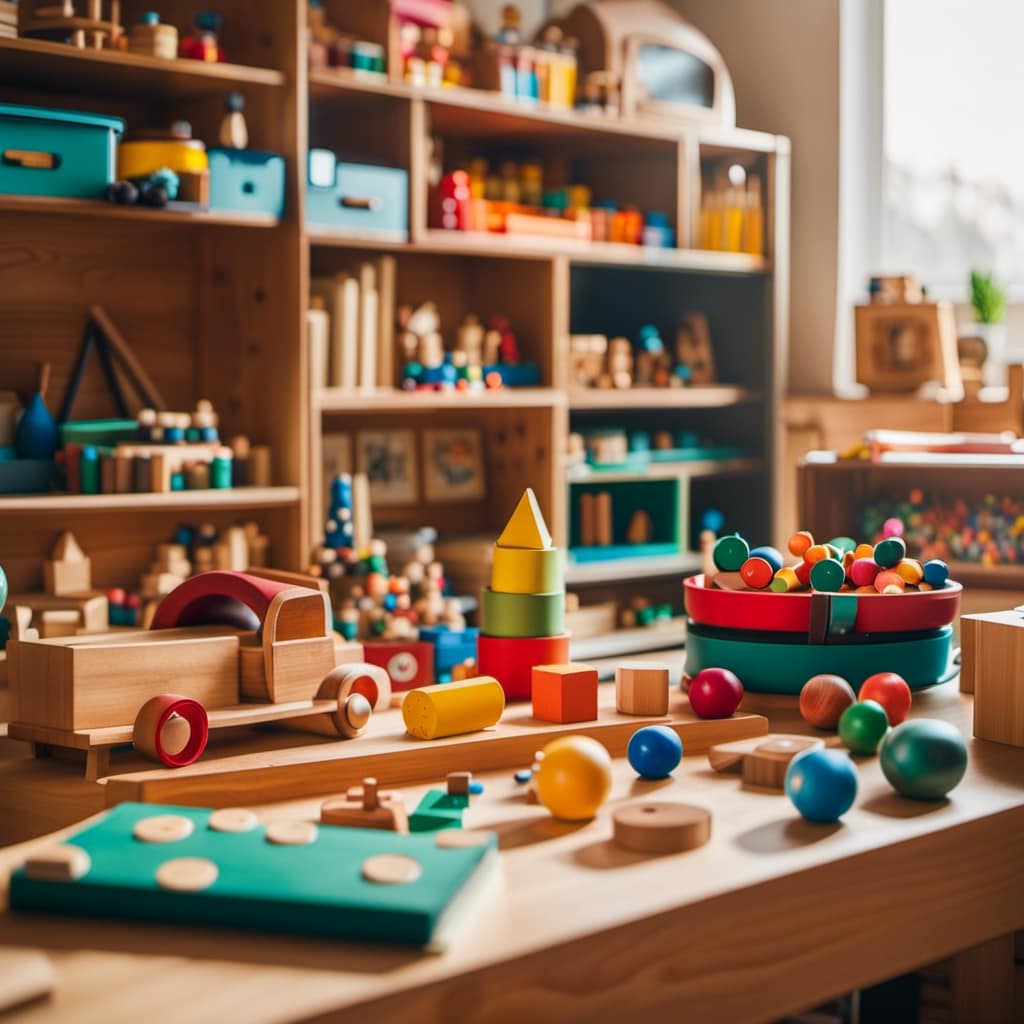
Preventing Further Deterioration
After assessing the damage, we gather the necessary tools to effectively repair any broken parts or loose components of the educational toy.
To prevent further deterioration and preserve the educational toy, it’s essential to address any damages as soon as they occur. Begin by inspecting the toy thoroughly and identifying the areas that need repair.
Use appropriate tools such as glue, screws, or replacement parts to fix any broken or loose components. Follow the manufacturer’s instructions, if available, to ensure proper repair. Pay attention to small details such as tightening screws, reattaching detached parts, and fixing any cracks or tears.
Regularly checking and repairing the toy will help prolong its lifespan and provide continued educational value to children. Remember, proper toy maintenance is crucial for preserving educational toys and ensuring they remain safe and functional for years to come.
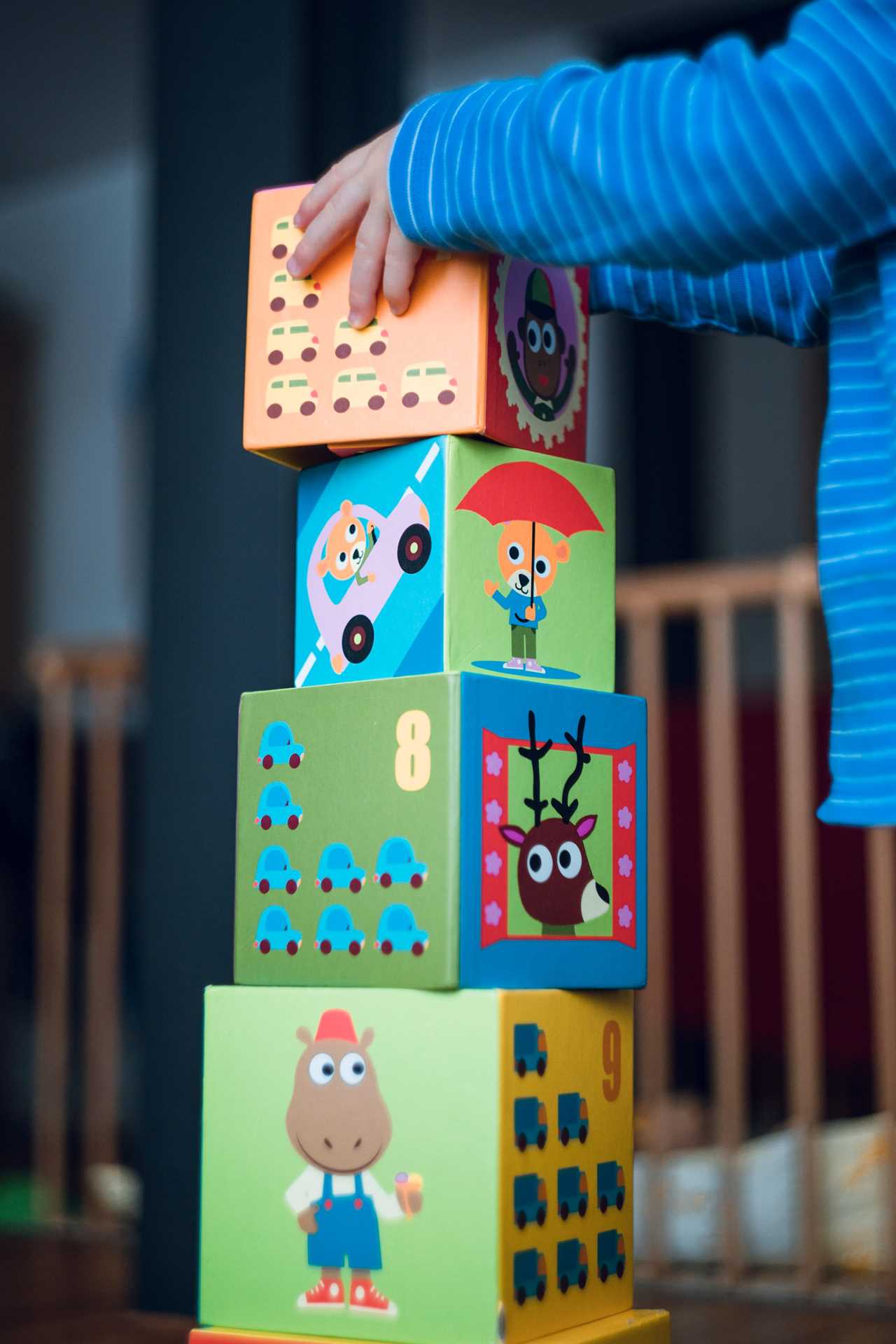
DIY Repair Techniques
To repair any damages to educational toys, we utilize DIY techniques to ensure their continued functionality and educational value. Here are some effective DIY repair techniques that can help in preventing toy breakage:
-
Reinforce weak spots: Identify areas that are prone to damage, such as joints or small plastic parts. Use strong adhesive or tape to reinforce these weak spots and prevent further breakage.
-
Fix loose connections: If a toy has loose wires or connectors, use electrical tape or soldering to secure them properly. This will ensure that the toy functions safely and effectively.
-
Patch up tears: For toys with fabric or soft materials, patch up any tears or holes using fabric glue or sewing. This will extend the lifespan of the toy and prevent further damage.
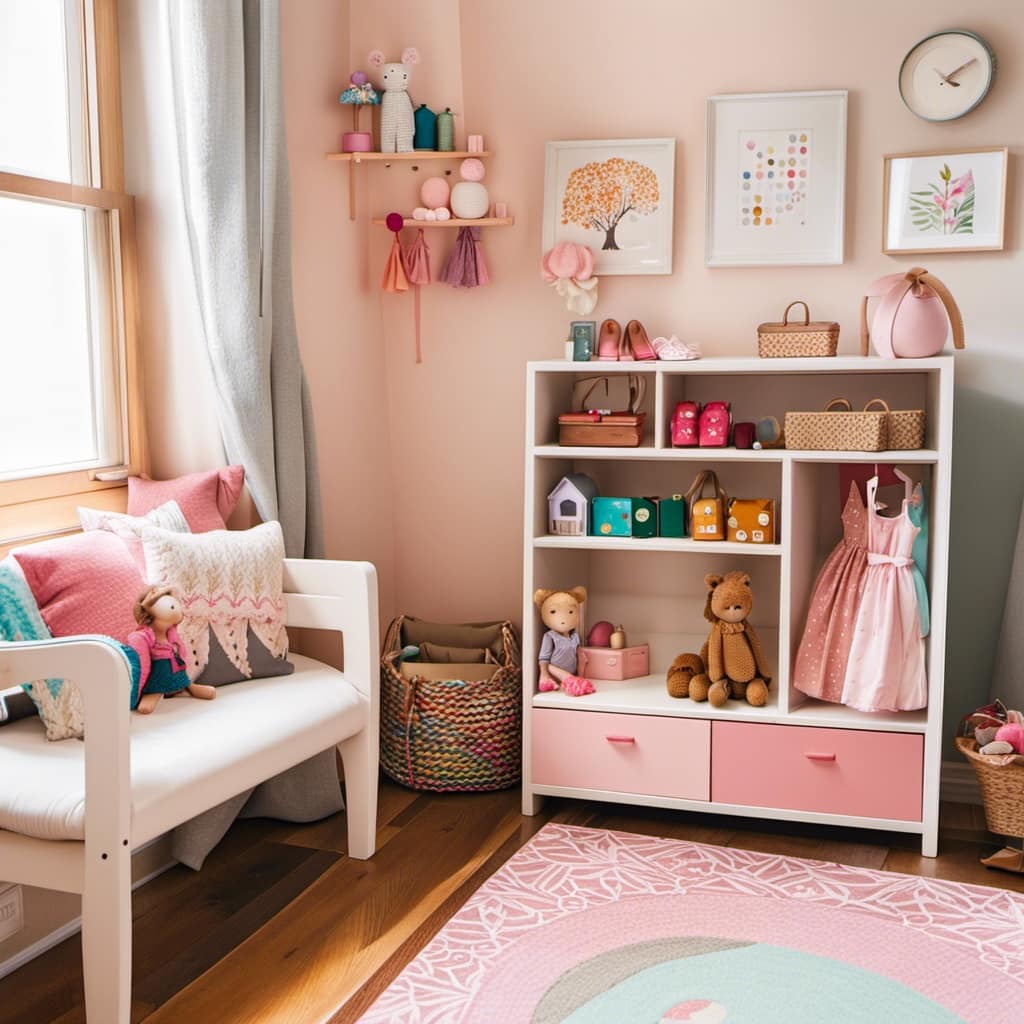
By employing these DIY repair techniques, you can save money and prolong the life of your educational toys.
Now, let’s explore another important aspect of toy maintenance – rotating toys to maintain interest.
Rotate Toys to Maintain Interest
We regularly swap out our educational toys to keep the interest of our children. Rotating toys is an effective strategy to maintain their engagement and prevent boredom. By introducing new toys and removing old ones, we ensure that our children stay excited and motivated to learn.
Moreover, toy rotation offers an opportunity to teach children about the concept of sharing and the importance of taking turns. They learn that toys are meant to be enjoyed by everyone and that it’s fair to let others have a chance to play with them. This not only promotes social skills but also reinforces the value of sharing and empathy.

Keep Small Parts Secure
When it comes to educational toys, it’s important to prioritize safety, especially when dealing with small parts. To prevent choking hazards, make sure that small parts are securely attached to the toy and can’t be easily detached.
Regularly check for loose or broken parts and repair or replace them as needed. By keeping small parts secure, you can ensure a safe and enjoyable playtime experience for children.
Safety Measures for Small Parts
Regularly inspect and securely fasten small parts to ensure the safety of children playing with educational toys. Follow these small parts safety guidelines to prevent accidents with small parts:
-
Check for loose or broken small parts: Inspect toys for any small parts that may have become loose or broken over time. Ensure that they’re securely attached or replace them if necessary.

-
Use age-appropriate toys: Pay attention to the age recommendations on toy packaging. Toys with small parts should only be given to children who are old enough to handle them safely.
-
Store small parts separately: Keep small parts in a secure container or bag when not in use. This will prevent them from being accidentally ingested or lost.
By taking these safety measures, you can minimize the risk of accidents with small parts and ensure a safe play environment for children.
Now, let’s move on to the next section about preventing choking hazards.
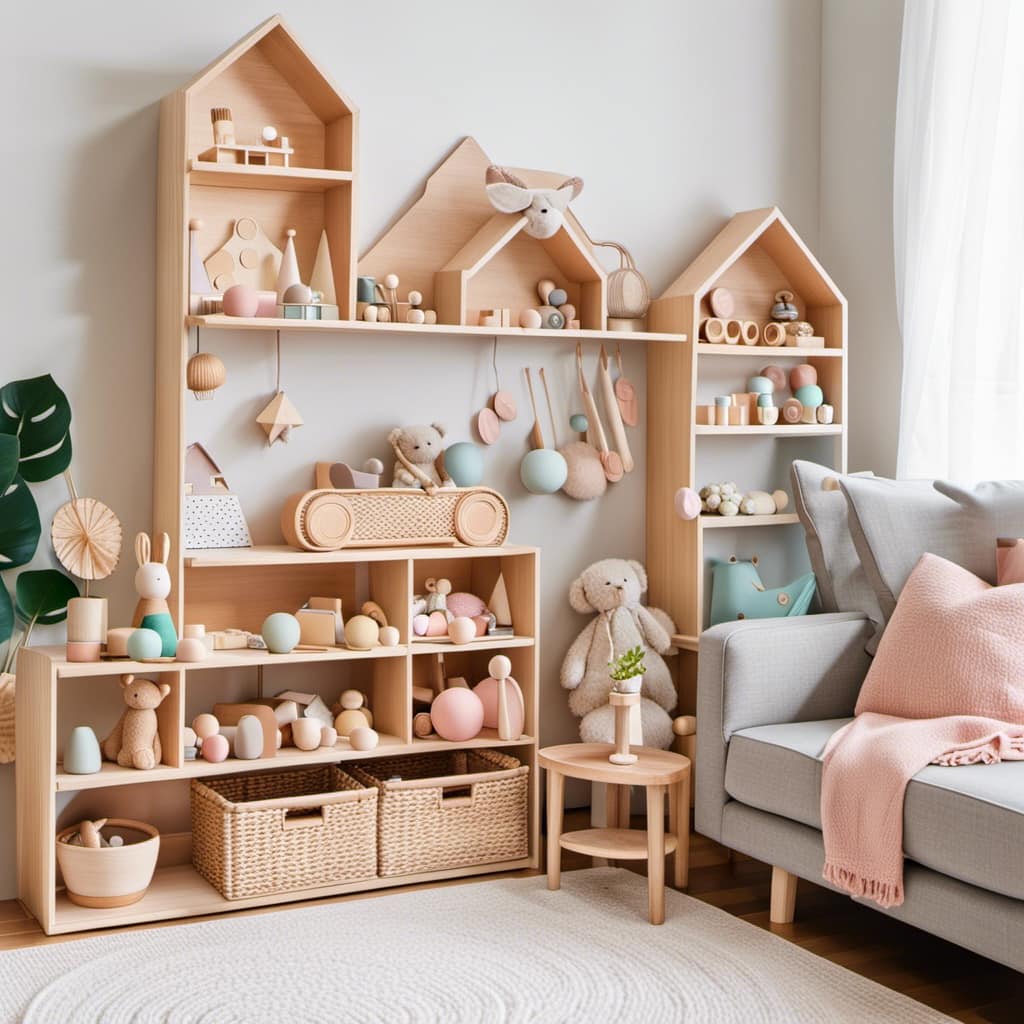
Preventing Choking Hazards
To prevent choking hazards, it’s important to securely keep small parts of educational toys out of reach of children. Follow these safety guidelines to ensure the well-being of your child:
-
Choose age-appropriate toys: Select toys that are suitable for your child’s age. Avoid toys with small parts for younger children.
-
Read warning labels: Pay attention to warning labels on toy packaging. Manufacturers provide important information about choking hazards.
-
Supervision needed: Always supervise children while they play with toys that contain small parts. This will help prevent accidents and choking incidents.
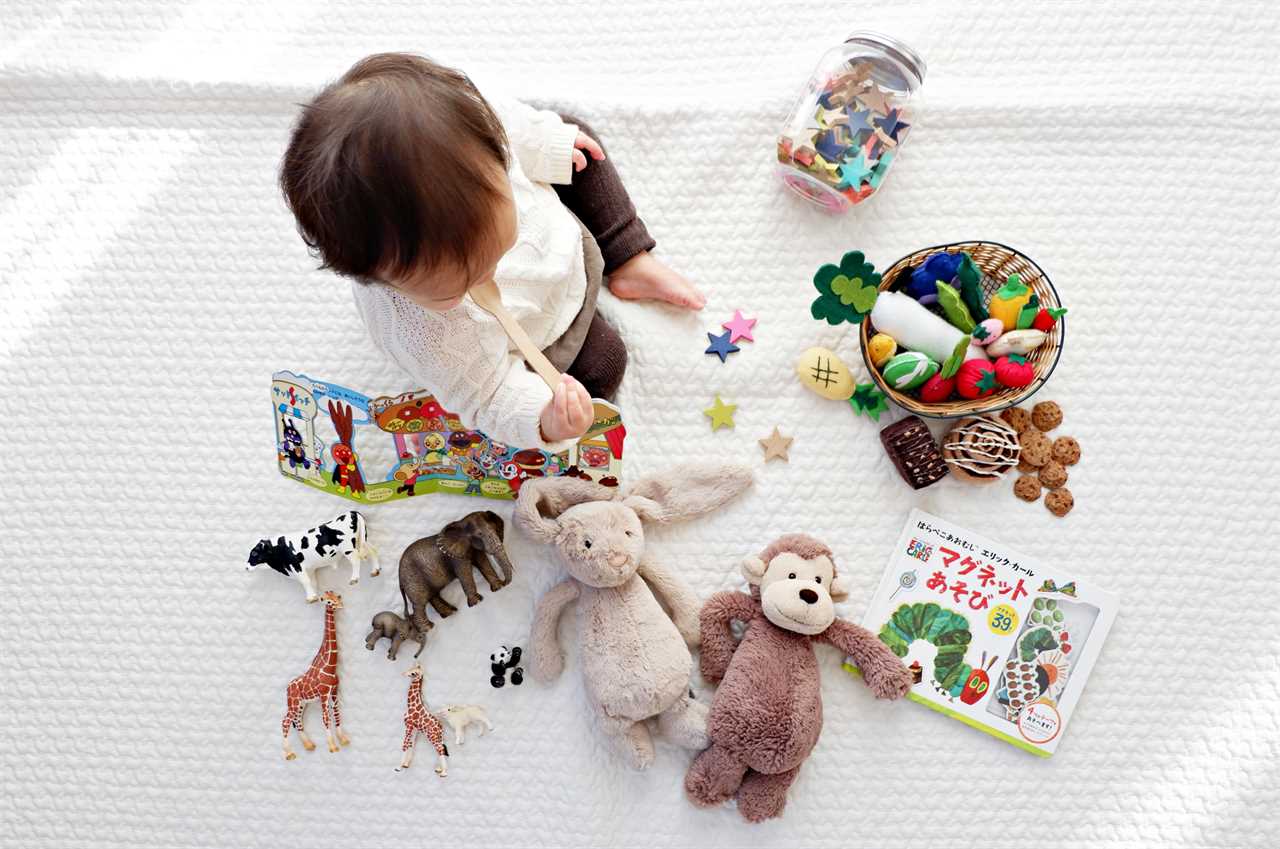
Check for Wear and Tear
We should regularly inspect our educational toys for signs of wear and tear to ensure their longevity and safety. Here is a toy maintenance checklist to help you identify any potential issues:
-
Check for loose parts: Make sure all the pieces are securely attached and haven’t become detached. Loose parts can pose a choking hazard, especially for younger children.
-
Look for frayed edges or broken seams: If you notice any fraying or damage to the fabric or materials, it’s important to repair or replace the toy to prevent any injuries.
-
Test the functionality: Ensure that any buttons, switches, or moving parts are working properly. If something isn’t functioning as it should, it’s best to fix or replace the toy to avoid any accidents.
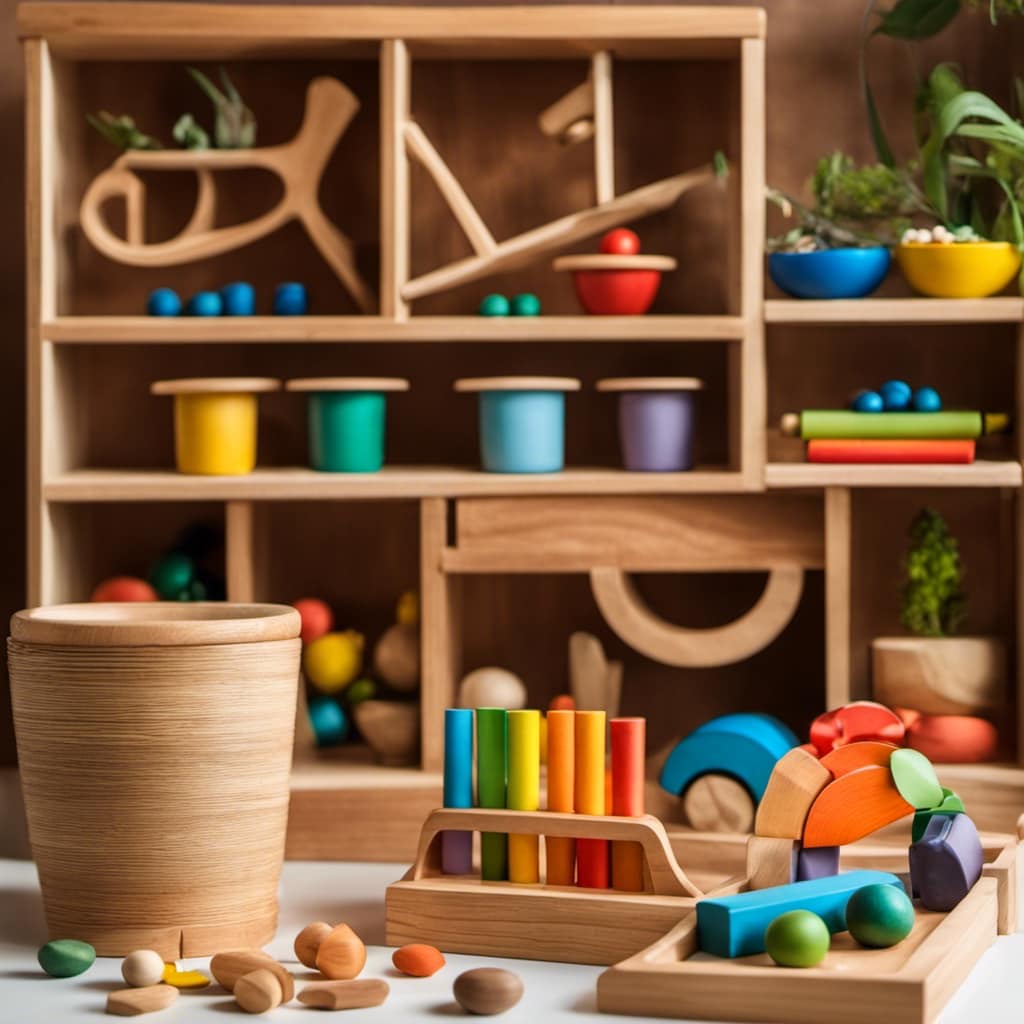
Follow Manufacturer’s Instructions
Let’s make sure to adhere to the manufacturer’s instructions when maintaining our educational toys. Following the instructions provided by the manufacturer is crucial in ensuring the longevity and safety of the toys. To emphasize the importance of this, I have created a table below showcasing the potential risks and solutions that may arise from not following the instructions.
| Potential Risks | Solutions |
|---|---|
| Damaged parts | Contact the manufacturer for replacement parts |
| Safety hazards | Follow the recommended age range and usage guidelines |
| Decreased durability | Clean the toys using the recommended methods and materials |
| Voiding warranty | Refer to the instructions for proper maintenance procedures |
| Impaired educational value | Understand the materials used and how to care for them |
Keep Toys Away From Moisture
How can we ensure the longevity and safety of our educational toys when it comes to keeping them away from moisture?
Here are three essential tips to help you protect your toys:
-
Store toys in a dry place: Avoid leaving them in damp areas such as basements or bathrooms. Instead, choose a cool and dry location like a closet or toy box.
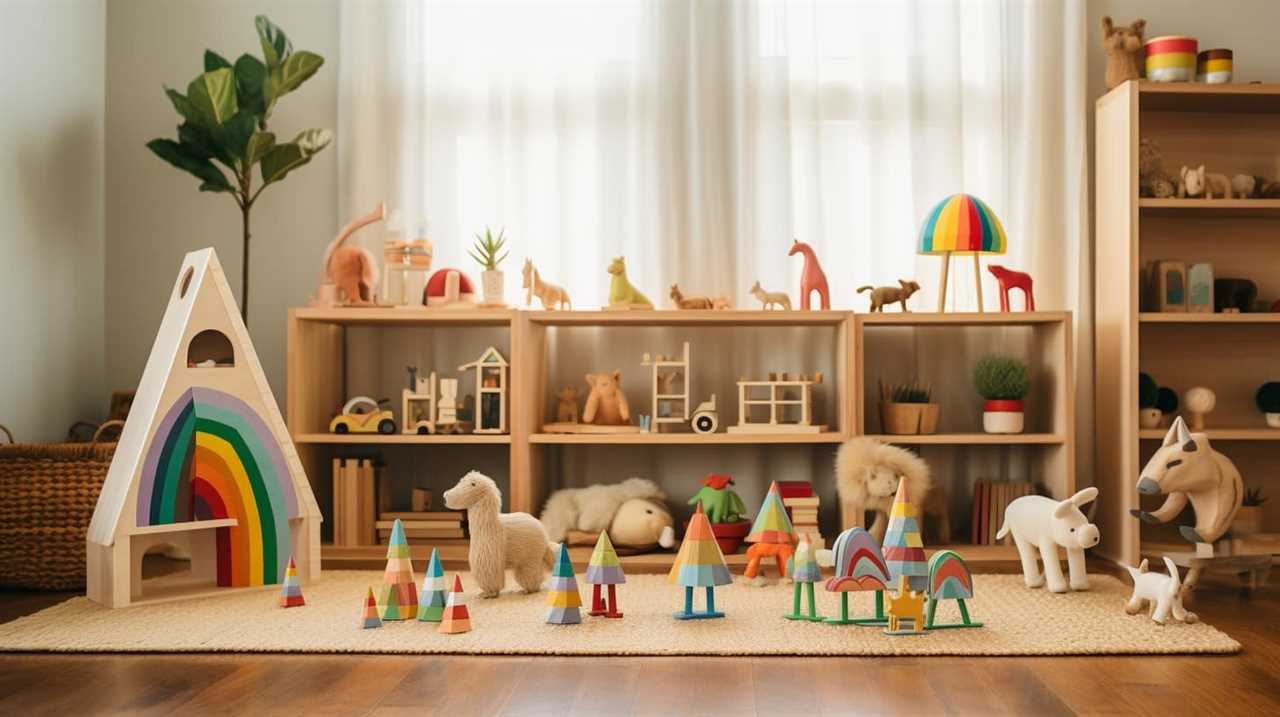
-
Avoid sunlight exposure: Direct sunlight can cause fading and damage to the materials of your toys. Keep them away from windows or use UV-blocking curtains to protect them.
-
Use eco-friendly cleaning products: When it’s time to clean your toys, opt for non-toxic and eco-friendly cleaning solutions. Harsh chemicals can be harmful to both the toys and the environment.
Teach Children Proper Toy Care
To ensure the longevity and safety of our educational toys, it’s important to teach children responsibility and involve them in the maintenance of their toys.
Start by explaining why it’s important to take care of their toys, emphasizing that proper care will make them last longer and stay in good condition.
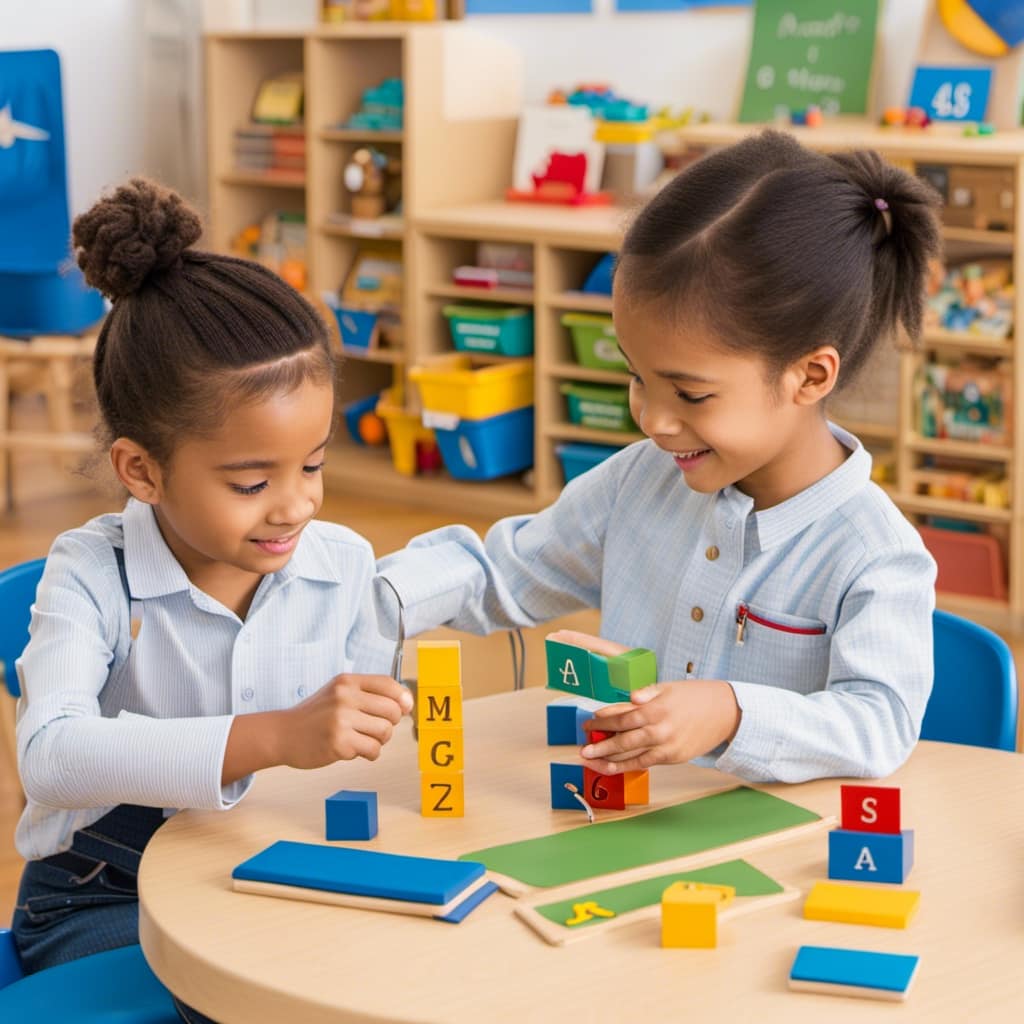
Show them how to clean their toys regularly and store them properly when not in use.
Teach them to handle toys with care, avoiding rough play or throwing them around.
Encourage them to pick up after themselves and put their toys away after playing.
Frequently Asked Questions
Are There Any Specific Cleaning Products That Should Be Used to Clean Educational Toys?
There are specific cleaning products that can be used to clean educational toys, but there are also alternatives to store-bought cleaners. It’s important to consider the material of the toy and follow appropriate cleaning methods.
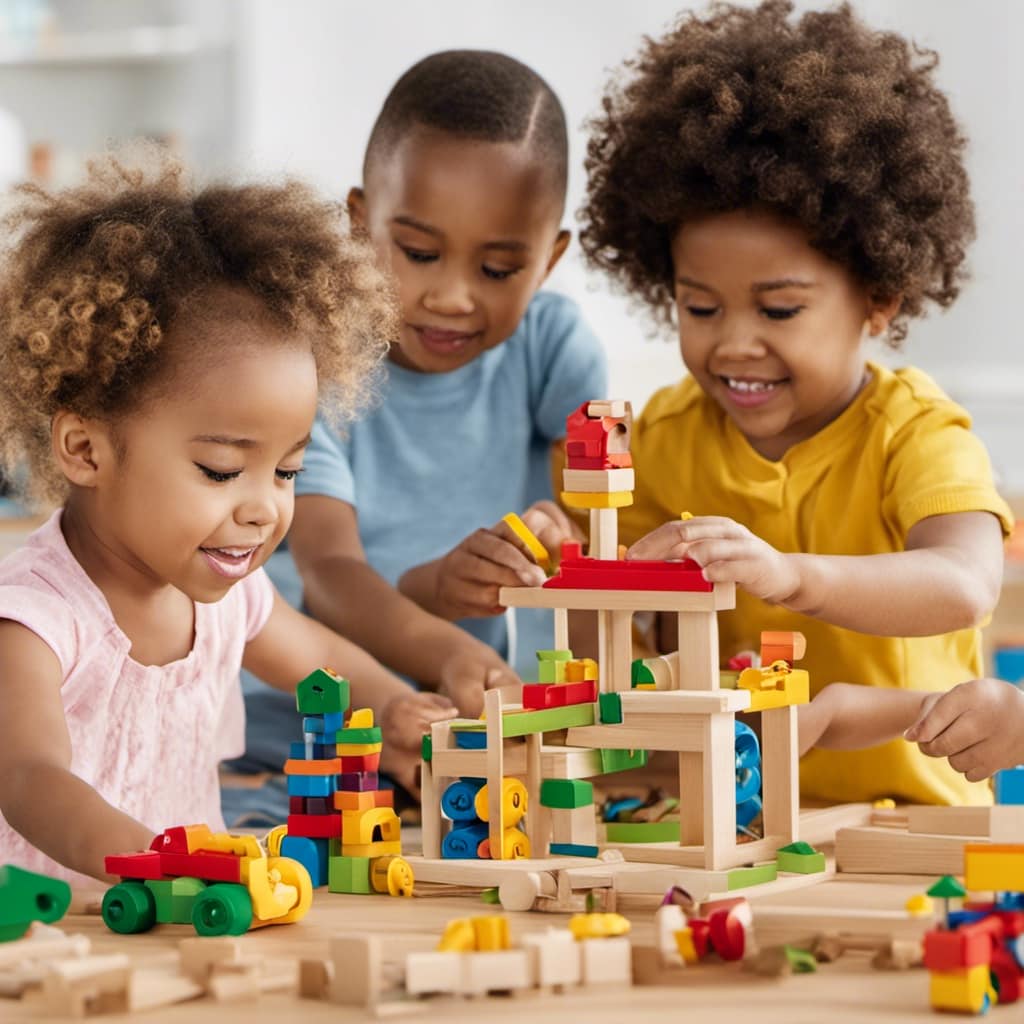
How Often Should Educational Toys Be Inspected for Wear and Tear?
Inspect educational toys regularly to identify signs of wear and tear. This helps extend their lifespan. Look for loose parts, frayed wires, or broken pieces. By catching these issues early, we can ensure safe and effective playtime for children.
Can Educational Toys Be Stored in Any Type of Container or Are There Specific Storage Methods?
For the best storage practices of educational toys, it’s crucial to use suitable storage containers. Not all containers are suitable, so it’s important to consider factors like size, durability, and organization.
What Should I Do if a Stain on an Educational Toy Cannot Be Removed Promptly?
If a stain on an educational toy cannot be removed promptly, we can try various stain removal techniques. Some toy cleaning hacks include using baking soda, vinegar, or mild soap. These methods can help keep our toys clean and safe.
Are There Any Specific Safety Guidelines for Rotating Toys to Maintain Interest?
Rotating toys for continued interest is important. We should ensure toy safety for children by regularly checking for any broken or loose parts. It’s crucial to follow age recommendations and supervise playtime to prevent accidents.
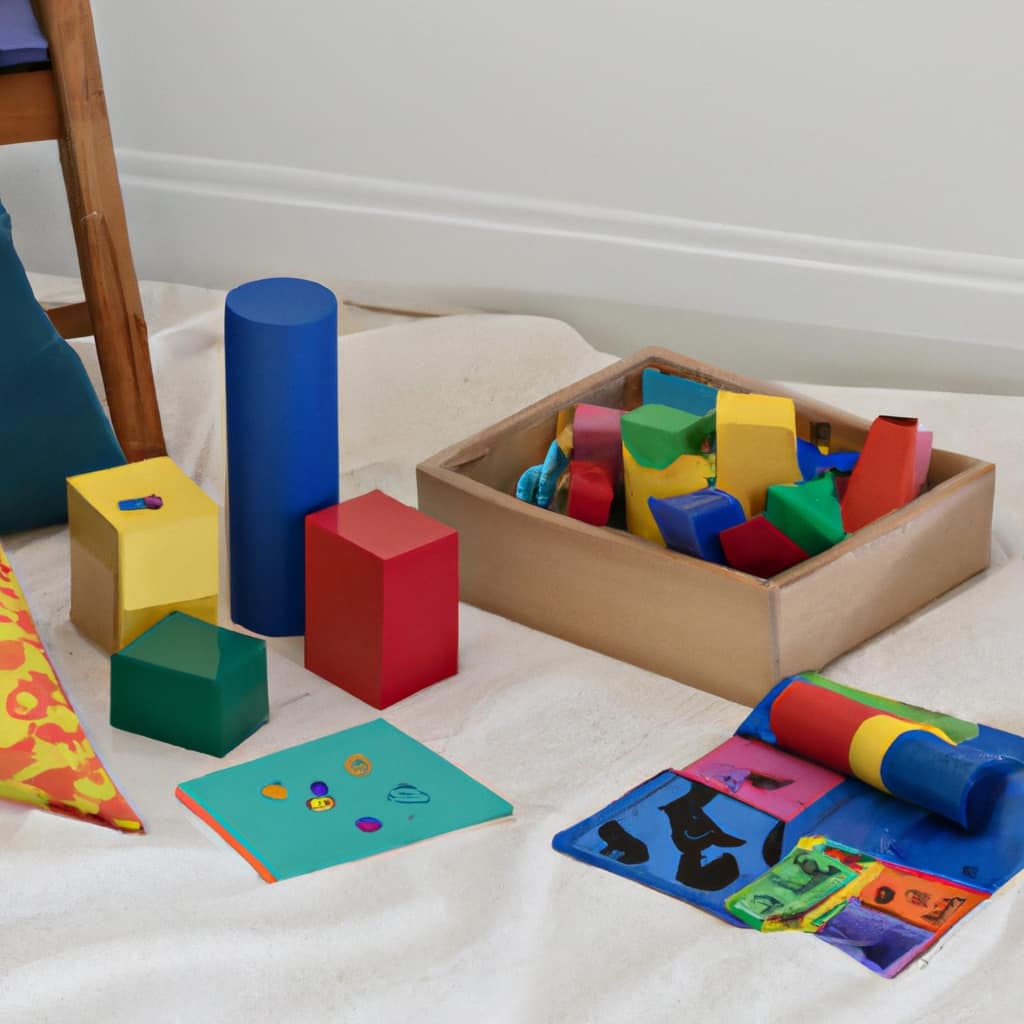
Conclusion
In conclusion, taking care of educational toys is essential for their longevity and continued educational value.
By regularly inspecting, storing, and cleaning toys, we can ensure they stay safe and effective for our children’s learning.
Just like a well-tended garden produces beautiful flowers, a well-maintained toy collection will continue to inspire and nurture young minds.
So let’s cultivate a love for learning by giving our educational toys the care they deserve.
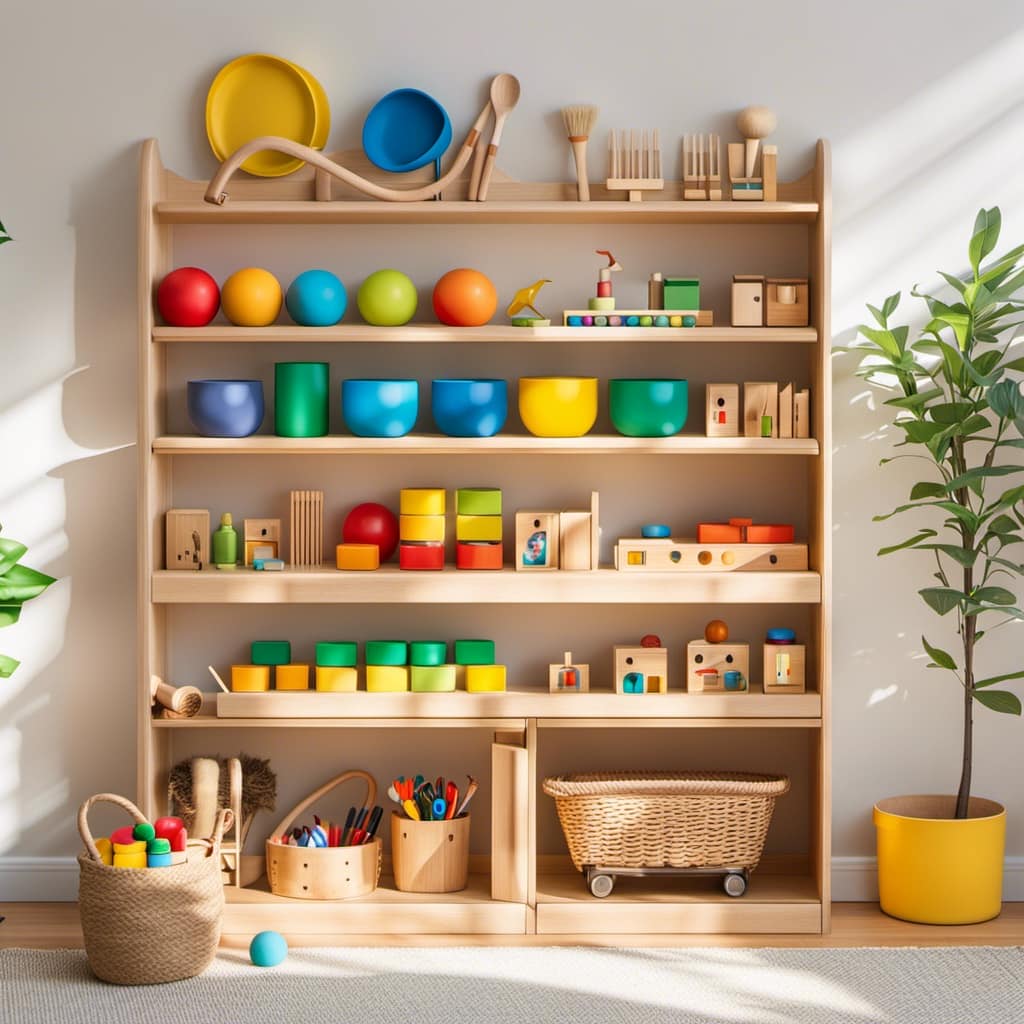
Mila, a gifted writer with a heart brimming with enthusiasm for child development and playful learning, is the creative force behind the enchanting narratives and insightful articles that grace Toddler Ride On Toys. With a background in early childhood education and a genuine passion for nurturing young minds, Mila weaves words that captivate, educate, and inspire parents, caregivers, and educators.



